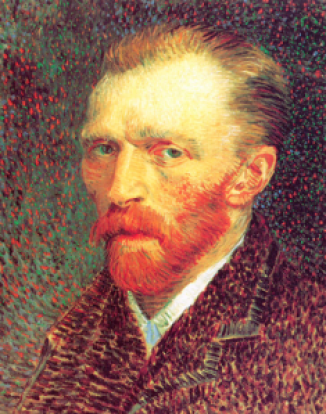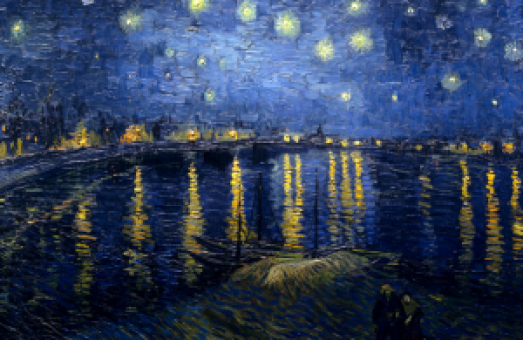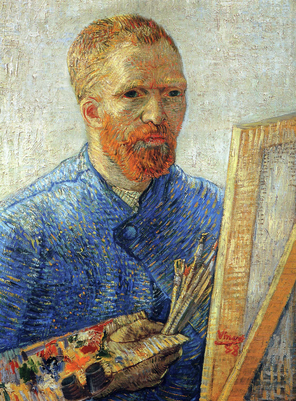Being a post-Impressionist isn’t easy. It just makes you seem like a more unoriginal version of an Impressionist. However, Vincent Van Gogh was willing to do exactly that–at the price of his sanity. From an early age, Van Gogh showed a predilection for drawing. Perhaps this is what led him to act as a shill for a firm of art dealers before he finally had to stop giving his soul to the man and paint for himself.

But even before he began his career as a painter, he dabbled in religion as a missionary, which seemed really just an excuse to paint the people he would come across in his travels throughout Belgium. In his late twenties, Van Gogh began his prolific period of painting (mostly oil and water color) and was driven slowly yet quickly into madness of the manic depressive kind. Supported financially by his brother, Theo, Van Gogh endured a period of extreme productivity while living in Arles, France in the 1880s.
 Ultimately, Van Gogh would have to move back in with his parents a number of times (foreshadowing for later less artistic generations to come) in order to cope with emotional and monetary upheaval. A harsh romantic rejection from his cousin, Kee Vos-Stricker, would also prove to be a further psychological blow in Van Gogh’s later years. For what’s an artist without the passion spurred on by love (unless, of course, it’s the melancholy spurred on by unrequited love)?
Ultimately, Van Gogh would have to move back in with his parents a number of times (foreshadowing for later less artistic generations to come) in order to cope with emotional and monetary upheaval. A harsh romantic rejection from his cousin, Kee Vos-Stricker, would also prove to be a further psychological blow in Van Gogh’s later years. For what’s an artist without the passion spurred on by love (unless, of course, it’s the melancholy spurred on by unrequited love)?
 If his determination to marry a prostitute named Clarisa Maria Hoornek–better known as Sien–wasn’t an indication of his somewhat disquieted state of mind, then cutting off his ear (due in part to his emotional reaction to his friend and fellow painter, Paul Gaugin, leaving Arles) may have been another telltale sign of bad decision making. In the end, Van Gogh succumbed to the sadness that oft enveloped him, leaving behind influence and posthumous fame–as well as one of the most frequently asked questions in the art world: Is it better to remain obscure in life to achieve unbridled and laudatory respect in death?
If his determination to marry a prostitute named Clarisa Maria Hoornek–better known as Sien–wasn’t an indication of his somewhat disquieted state of mind, then cutting off his ear (due in part to his emotional reaction to his friend and fellow painter, Paul Gaugin, leaving Arles) may have been another telltale sign of bad decision making. In the end, Van Gogh succumbed to the sadness that oft enveloped him, leaving behind influence and posthumous fame–as well as one of the most frequently asked questions in the art world: Is it better to remain obscure in life to achieve unbridled and laudatory respect in death?





















